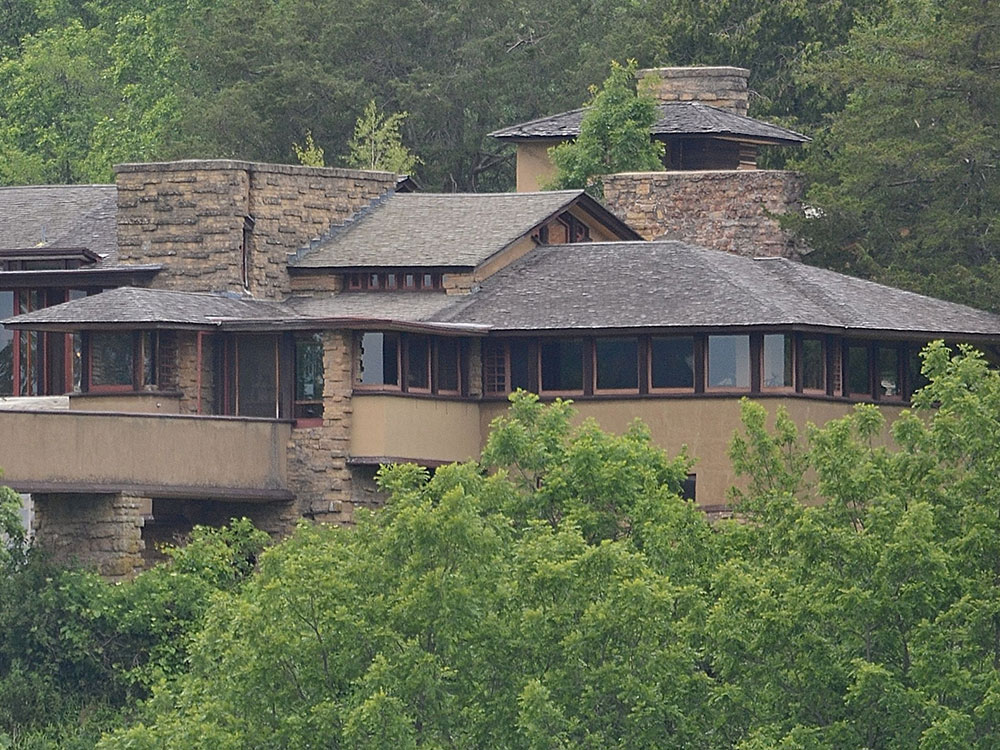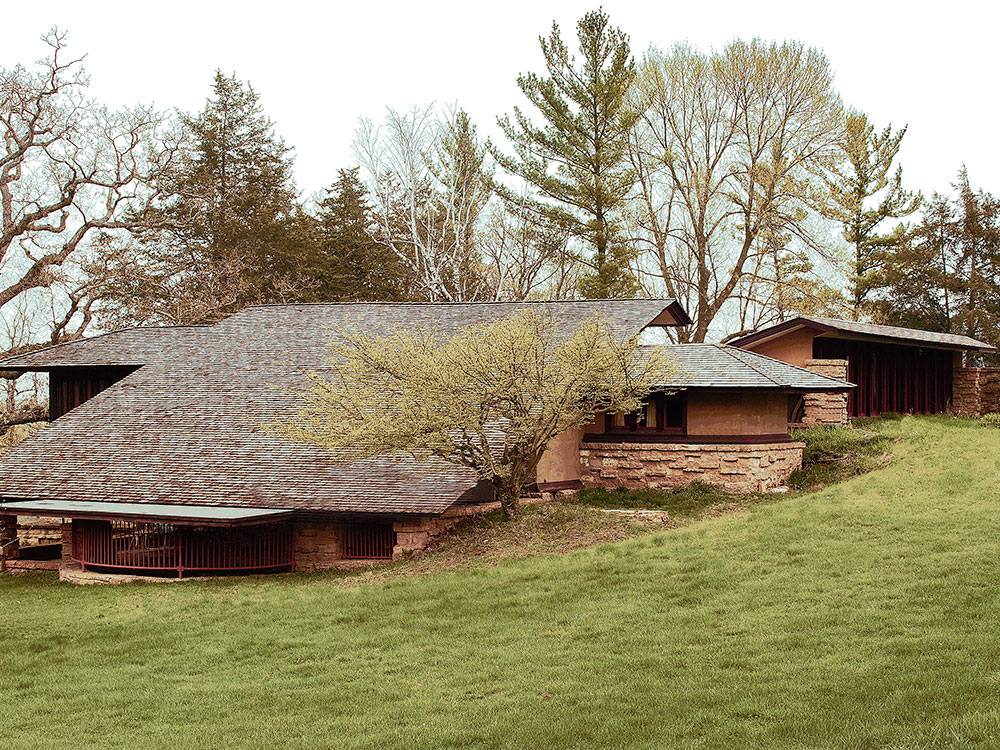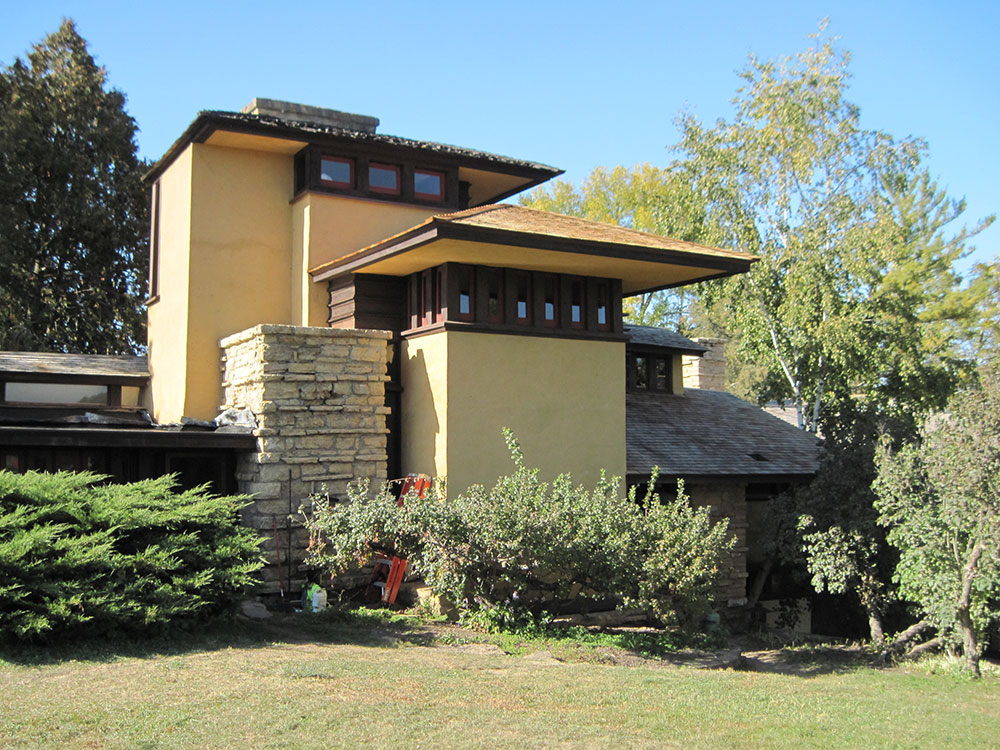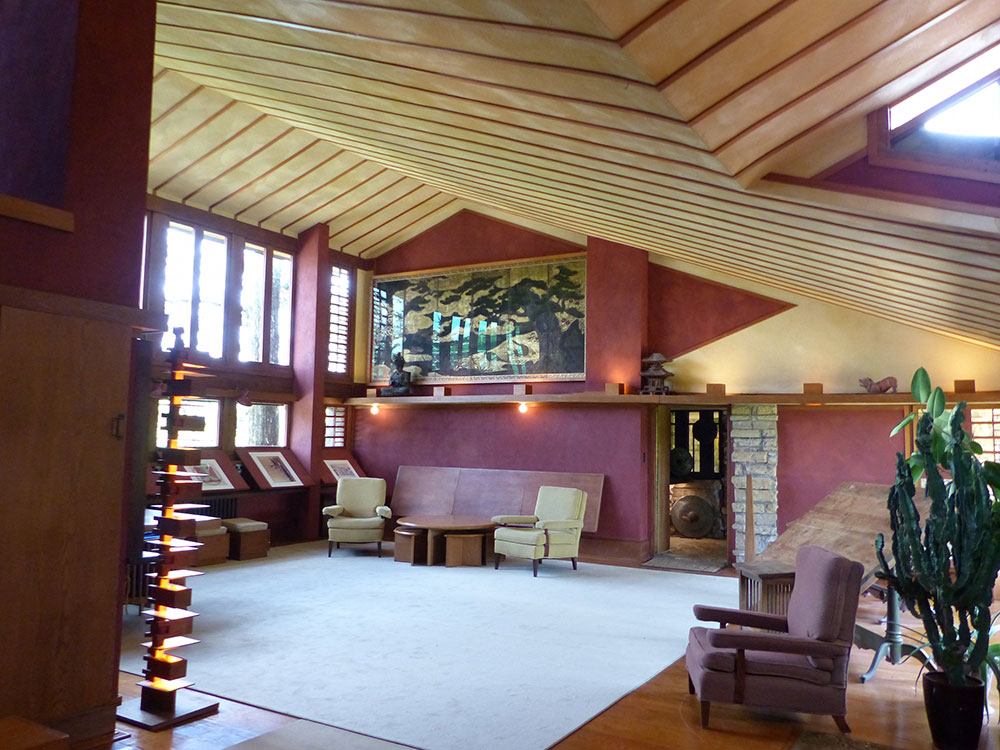House-studio complex developed and occupied by American architect Frank Lloyd Wright, the 600-acre estate is an exemplar of the Prairie School of architecture
General Information
How to Get There
Overview
Taliesin, is a house-studio complex located 2.5 miles (4.0 km) south of the village of Spring Green, Wisconsin. Developed and occupied by American architect Frank Lloyd Wright, the 600-acre (240 ha) estate is an exemplar of the Prairie School of architecture. Wright began developing the estate in 1911 on land that previously belonged to his maternal family.
Wright designed the main Taliesin home and studio with his mistress, Mamah Borthwick, after leaving his first wife and home in Oak Park, Illinois. The design of the original building was consistent with the design principles of the Prairie School, emulating the flatness of the plains and the natural limestone outcroppings of Wisconsin's Driftless Area. The structure (which included agricultural and studio wings) was completed in 1911. The name Taliesin, meaning "shining brow" in Welsh, was initially used for the first building, which was built on and into the brow of a hill; it was later extended to the entire estate.
Taliesin III was Wright's home for the rest of his life, although he began to spend the winters at Taliesin West in Scottsdale, Arizona, upon its completion in 1937. Many of Wright's acclaimed buildings were designed at Taliesin, including Fallingwater, the Jacobs I house, the Johnson Wax Headquarters, and the Solomon R. Guggenheim Museum. Wright, who was also an avid collector of Asian art, used Taliesin as a storehouse and private museum.
Wright left Taliesin and the 600-acre Taliesin Estate to the Frank Lloyd Wright Foundation (founded by him and his third wife in 1940) upon his death in 1959. This organization oversaw renovations to the estate until 1990, when a nonprofit organization known as Taliesin Preservation Inc. (TPI) took over responsibility. The Frank Lloyd Wright Foundation and Taliesin Preservation operate numerous public programs on the campus, and the farm is still in use today. The Taliesin estate was designated a National Historic Landmark in 1976, and it was listed as a World Heritage Site in 2019 as part of a group of eight listings known as "The 20th-Century Architecture of Frank Lloyd Wright".
Jones Valley, the Wisconsin River valley in which Taliesin sits, was formed during Pre-Illinoian glaciation. This region of North America, known as the Driftless Area, was totally surrounded by ice during Wisconsin glaciation, but the area itself was not glaciated. The result is an unusually hilly landscape with deeply carved river valleys.
The valley, approximately 2.5 miles (4.0 km) south of the village of Spring Green, Wisconsin, was originally settled by Frank Lloyd Wright's maternal grandfather, Richard Lloyd Jones. Jones had emigrated with his family from Wales, moving to the town of Ixonia in Jefferson County, Wisconsin. In 1858, Jones and the family moved from Ixonia to this part of Wisconsin to start a farm. By the 1870s, Jones' sons had taken over operation of the farm, and they invited Wright to work during summers as a farmhand.
TPI provides tours from May 1 through October 31 of each year, though weekend tours of the grounds are also available in April and November. Other visitation opportunities are available sporadically through the rest of the year.
This article uses material from the Wikipedia article "Taliesin (studio)", which is released under the Creative Commons Attribution-Share-Alike License 3.0



